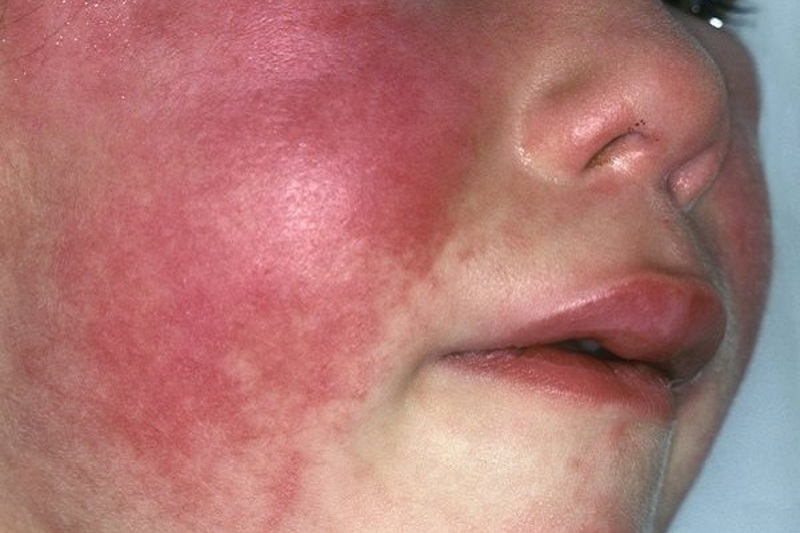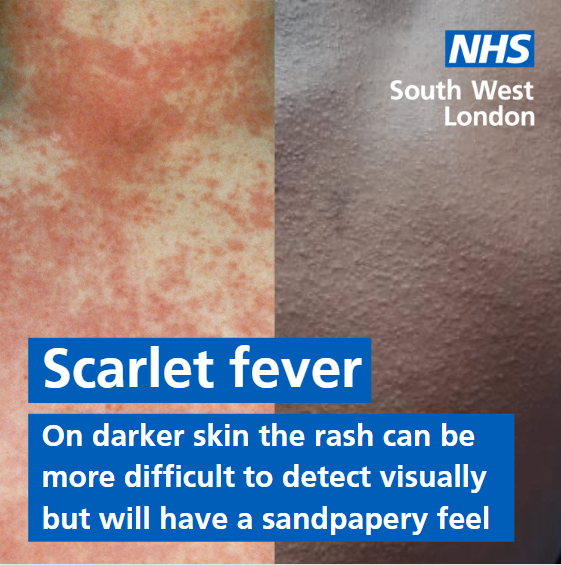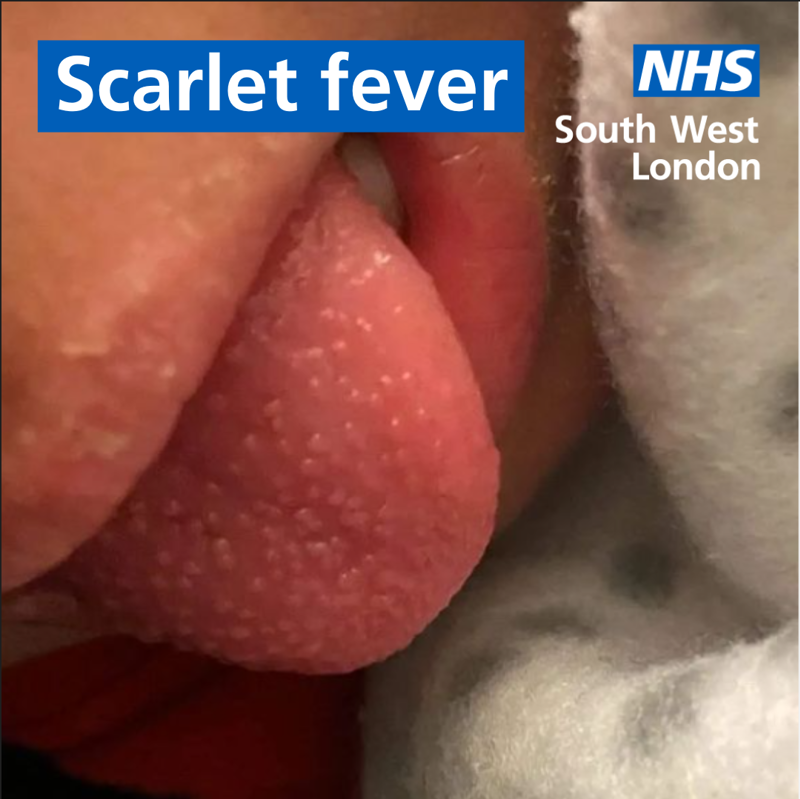Scarlet fever - what you need to know
Published: Monday, December 12, 2022
Following a recent increase in notifications of scarlet fever to the UK Health Security Agency (UKHSA), above seasonal expected levels, please take note of the following guidance.
Share this

The UK Health Security Agency (UKHSA) would like to take this opportunity to remind you of the signs, symptoms and the actions to be taken if you think that you or your child might have scarlet fever.
Signs and symptoms of scarlet fever
Scarlet fever is a common childhood infection caused by Streptococcus pyogenes or group A Streptococcus (GAS). It is not usually serious but should be treated with antibiotics to
reduce the risk of complications (such as pneumonia) and spread to others. The early symptoms of scarlet fever include sore throat, headache, fever, nausea and vomiting. After
12 to 48 hours, the characteristic red, pinhead rash develops, typically first appearing on the chest and stomach, then rapidly spreading to other parts of the body, and giving the skin a
sandpaper-like texture.

The scarlet rash may be harder to spot on darker skin, although the 'sandpaper' feel should be present. Patients typically have flushed cheeks and be pale around the mouth. This may be accompanied by a bright red ‘strawberry’ tongue.
If you think you, or your child, might have scarlet fever:
• contact your GP or NHS 111 as soon as possible
• make sure that you or your child take(s) the full course of any antibiotics prescribed.
Although you or your child will feel better soon after starting the course of antibiotics, you must complete the course to ensure that you do not carry the bacteria in your
throat after you have recovered
• stay at home, away from nursery, school or work for at least 24 hours after starting the antibiotic treatment, to avoid spreading the infection
You can help stop the spread of infection through frequent hand washing and by not sharing eating utensils, clothes, bedding and towels. All contaminated tissues should be disposed of
immediately.
Invasive Group A Strep (iGAS)
The same bacteria which cause scarlet fever can also cause a range of other types of infection such as skin infections (impetigo) and sore throat. In very rare cases, the bacteria
can get into the bloodstream and cause an illness called invasive group A strep (iGAS).
Whilst still very uncommon, there has been an increase in iGAS cases this year, particularly in children under 10 years old. It is very rare for children with scarlet fever to develop iGAS
infection.
As a parent, you should trust your own judgement.
Contact NHS 111 or your GP if:
• your child is getting worse
• your child is feeding or eating much less than normal
• your child has had a dry nappy for 12 hours or more or shows other signs of
dehydration
• your baby is under 3 months and has a temperature of 38C, or is older than 3 months
and has a temperature of 39C or higher
• your baby feels hotter than usual when you touch their back or chest, or feels sweaty
• your child is very tired or irritable
Call 999 or go to A&E if:
• your child is having difficulty breathing – you may notice grunting noises or their
tummy sucking under their ribs
• there are pauses when your child breathes
• your child’s skin, tongue or lips are blue
• your child is floppy and will not wake up or stay awake
Stop the spread
During periods of high incidence of scarlet fever, there may also be an increase in outbreaks in schools, nurseries and other childcare settings. Children and adults with suspected scarlet
fever should stay off nursery / school / work until 24 hours after the start of appropriate antibiotic treatment. Good hygiene practice such as hand washing remains the most important step in preventing and controlling spread of infection.
• GAS is spread by close contact with an infected person and can be passed on through coughs and sneezes or from a wound.
• Some people can have the bacteria present in their body without feeling unwell or showing any symptoms of infections and while they can pass it on, the risk of spread is much greater when a person is unwell.
• Good hand and respiratory hygiene are important for stopping the spread of many bugs.
• By teaching your child how to wash their hands properly with soap and warm water for 20 seconds, using a tissue to catch coughs and sneezes, and keeping away from
others when feeling unwell, they will be able to reduce the risk of picking up, or spreading infections.
Read more
